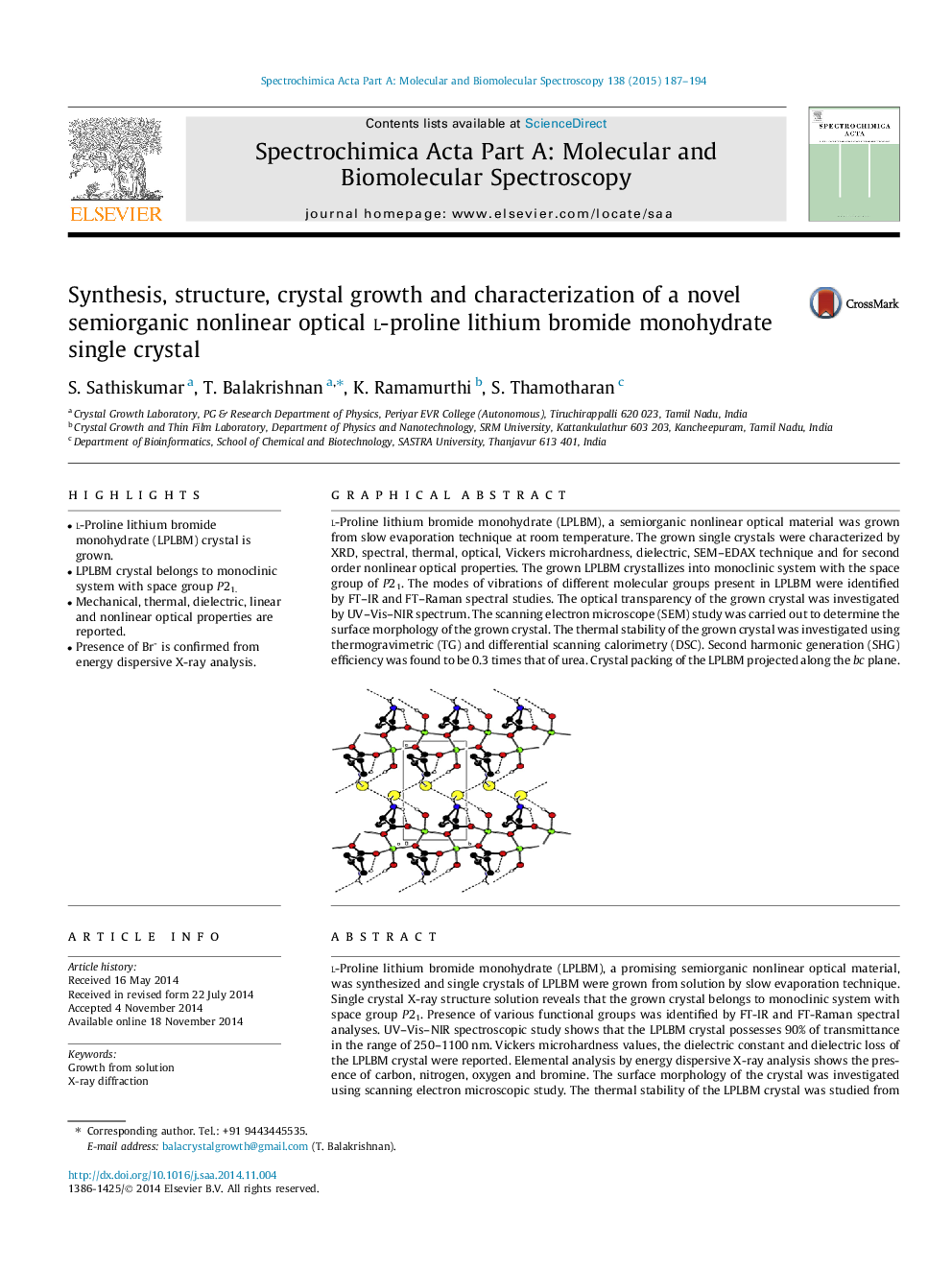| Article ID | Journal | Published Year | Pages | File Type |
|---|---|---|---|---|
| 1229052 | Spectrochimica Acta Part A: Molecular and Biomolecular Spectroscopy | 2015 | 8 Pages |
•l-Proline lithium bromide monohydrate (LPLBM) crystal is grown.•LPLBM crystal belongs to monoclinic system with space group P21.•Mechanical, thermal, dielectric, linear and nonlinear optical properties are reported.•Presence of Br- is confirmed from energy dispersive X-ray analysis.
l-Proline lithium bromide monohydrate (LPLBM), a promising semiorganic nonlinear optical material, was synthesized and single crystals of LPLBM were grown from solution by slow evaporation technique. Single crystal X-ray structure solution reveals that the grown crystal belongs to monoclinic system with space group P21. Presence of various functional groups was identified by FT-IR and FT-Raman spectral analyses. UV–Vis–NIR spectroscopic study shows that the LPLBM crystal possesses 90% of transmittance in the range of 250–1100 nm. Vickers microhardness values, the dielectric constant and dielectric loss of the LPLBM crystal were reported. Elemental analysis by energy dispersive X-ray analysis shows the presence of carbon, nitrogen, oxygen and bromine. The surface morphology of the crystal was investigated using scanning electron microscopic study. The thermal stability of the LPLBM crystal was studied from TGA and DSC analysis. Second harmonic generation efficiency of the LPLBM crystal measured by Kurtz and Perry powder technique using Nd:YAG laser is about 0.3 times that of urea.
Graphical abstractl-Proline lithium bromide monohydrate (LPLBM), a semiorganic nonlinear optical material was grown from slow evaporation technique at room temperature. The grown single crystals were characterized by XRD, spectral, thermal, optical, Vickers microhardness, dielectric, SEM–EDAX technique and for second order nonlinear optical properties. The grown LPLBM crystallizes into monoclinic system with the space group of P21. The modes of vibrations of different molecular groups present in LPLBM were identified by FT–IR and FT–Raman spectral studies. The optical transparency of the grown crystal was investigated by UV–Vis–NIR spectrum. The scanning electron microscope (SEM) study was carried out to determine the surface morphology of the grown crystal. The thermal stability of the grown crystal was investigated using thermogravimetric (TG) and differential scanning calorimetry (DSC). Second harmonic generation (SHG) efficiency was found to be 0.3 times that of urea. Crystal packing of the LPLBM projected along the bc plane.Figure optionsDownload full-size imageDownload as PowerPoint slide
